Pagliaccio
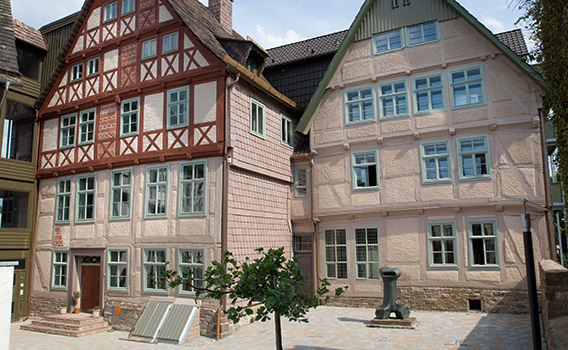
“Der Vereinsamte. Clowns in der Kunst Fritz Aschers”
Forum Jacob Pins, Höxter, Germany
Forum Jacob Pins
Westerbachstr. 35-37, Höxter, NY, Germany
“The Loner. Clowns in the Art of Fritz Ascher (1893-1970)” Watch the German language video of the opening lecture by Julia Diekmann, Curator at Forum Jacob Pins HERE. Watch a short German language video about the installation of the exhibition HERE. You can order the bilingual (German/English) exhibition catalogue HERE. On the occasion of the 50th anniversary of the artist's death, Forum Jacob Pins shows around 40 paintings and works on paper by the Expressionist Fritz Ascher (1893-1970). Persecuted by the National Socialists as a “degenerate” artist and as a born Jew, Ascher lived through two world wars, existential social and political unrest, the persecution by the National Socialists and the development of a divided Germany. The exhibition for the [...]
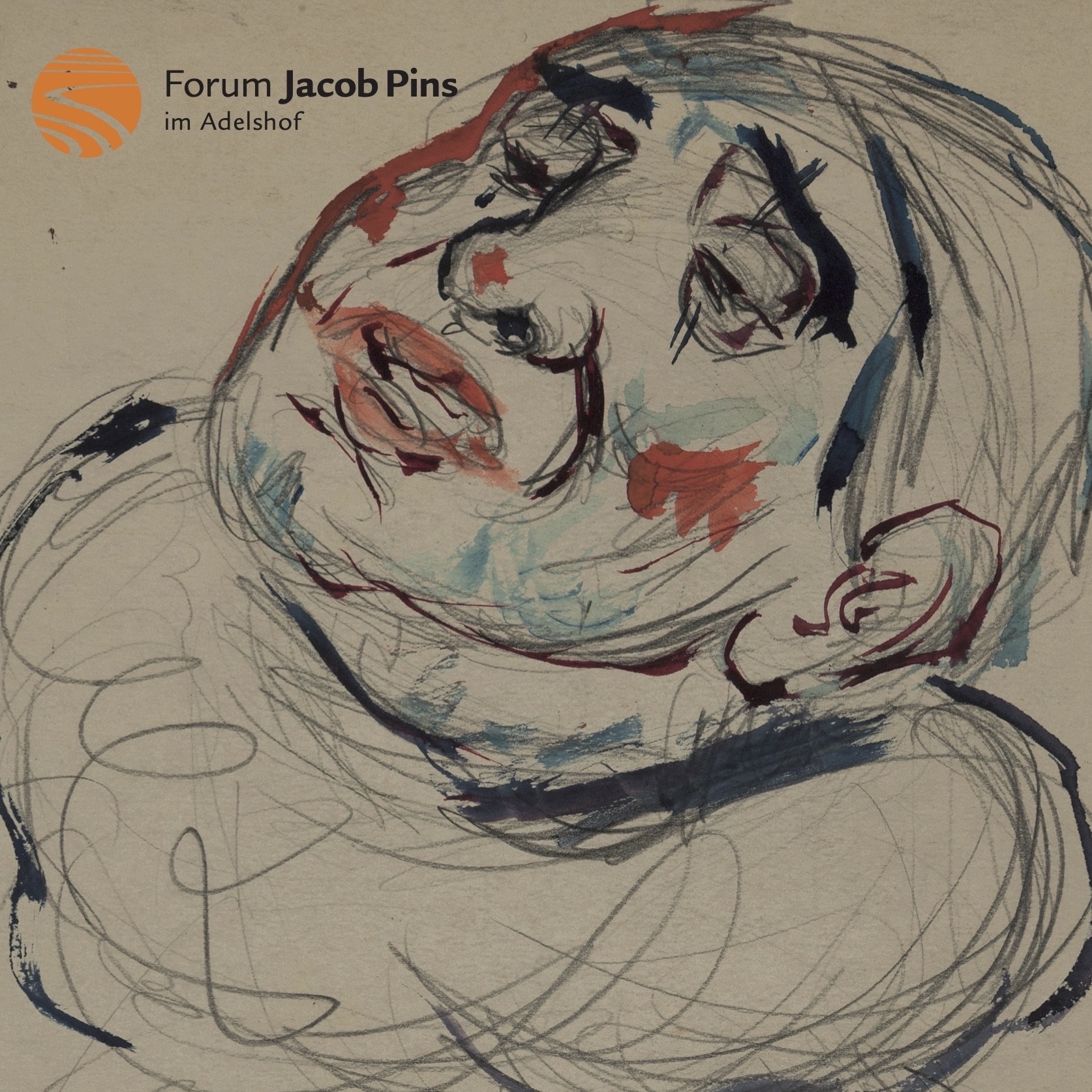
Guided Tour through the Exhibition
“The Loner. Clowns in the Art of Fritz Ascher”
by Curator Julia Diekmann, Höxter (Germany)
Forum Jacob Pins
Westerbachstr. 35-37, Höxter, NY, Germany
Exhibition curator Julia Diekmann guides through the exhibition. Whether in dramatic context or as individual figure, the clown always plays the role of the outsider, of the one opposite the many. He is laughed at and ridiculed, is the fool, despised, and humiliated, always operating from the margin. In Ascher’s work, the figure of the clown, the Bajazzo, appears first around 1916. It becomes a lifelong interest, expressed in paintings, drawings, lithographs and poems. Based on the opera I Pagliacci by Ruggero Leoncavallo (1857-1919), which was popular in the 1920s, Ascher creates both dramatic scenes of the tragic love burlesque and studies of the Bajazzo, the Pagliaccio or clown as a single figure. The intensity in the artistic expression of the figure, [...]

Guided Tour through the Exhibition
“The Loner. Clowns in the Art of Fritz Ascher”
by Curator Julia Diekmann, Höxter (Germany)
Forum Jacob Pins
Westerbachstr. 35-37, Höxter, NY, Germany
Exhibition curator Julia Diekmann guides through the exhibition. Whether in dramatic context or as individual figure, the clown always plays the role of the outsider, of the one opposite the many. He is laughed at and ridiculed, is the fool, despised, and humiliated, always operating from the margin. In Ascher’s work, the figure of the clown, the Bajazzo, appears first around 1916. It becomes a lifelong interest, expressed in paintings, drawings, lithographs and poems. Based on the opera I Pagliacci by Ruggero Leoncavallo (1857-1919), which was popular in the 1920s, Ascher creates both dramatic scenes of the tragic love burlesque and studies of the Bajazzo, the Pagliaccio or clown as a single figure. The intensity in the artistic expression of the figure, [...]
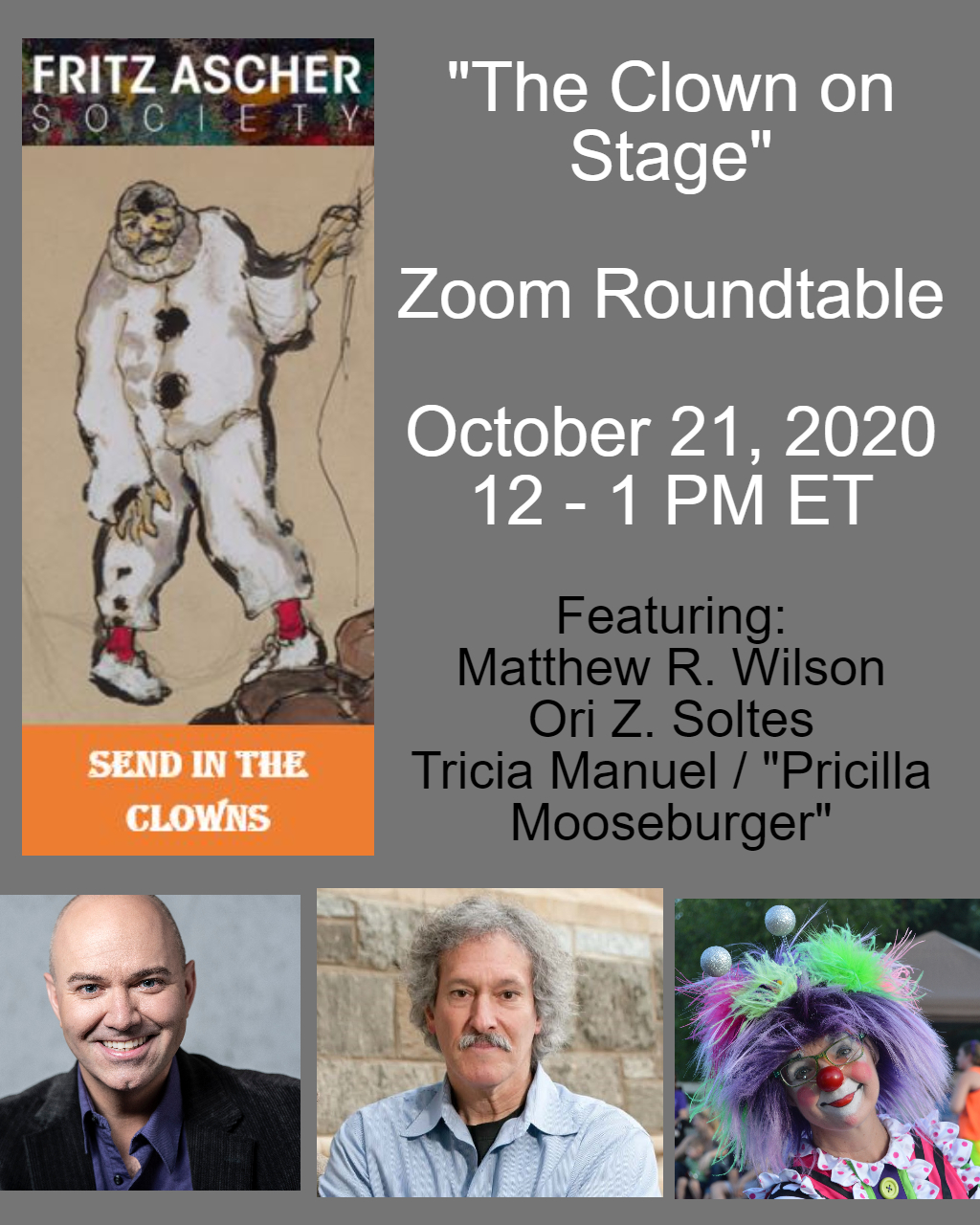
“The Clown on Stage”
Roundtable featuring
Matthew R. Wilson, Ori Z. Soltes, Tricia Manuel / “Pricilla Mooseburger”
Moderated by Elizabeth Berkowitz
1014 - space for ideas
1014 5th Avenue, New York, New York, NY, United States
Watch the recording of this event HERE. Roundtable featuring Matthew R. Wilson Director (SDC), Actor (AEA, SAG-AFTRA), and Fight Director (SAFD, SDC), as well as a scholar and playwright Ori Z. Soltes Teaching Professor at Center for Jewish Civilization, Georgetown University, Washington D.C. Tricia Manuel / "Pricilla Mooseburger" the Clown Tricia Manuel is the unmistakable Pricilla Mooseburger! Moderated by Elizabeth Berkowitz Art Historian and Digital Interpretation Manager, The Fritz Ascher Society in New York How do we define “the clown,” historically, in art, and today, in practice? What is the appeal of the clown in performance, and how has the clown subject impacted popular culture? This roundtable pools the expertise from a diversity of fields to place Fritz Ascher’s interest in “the [...]
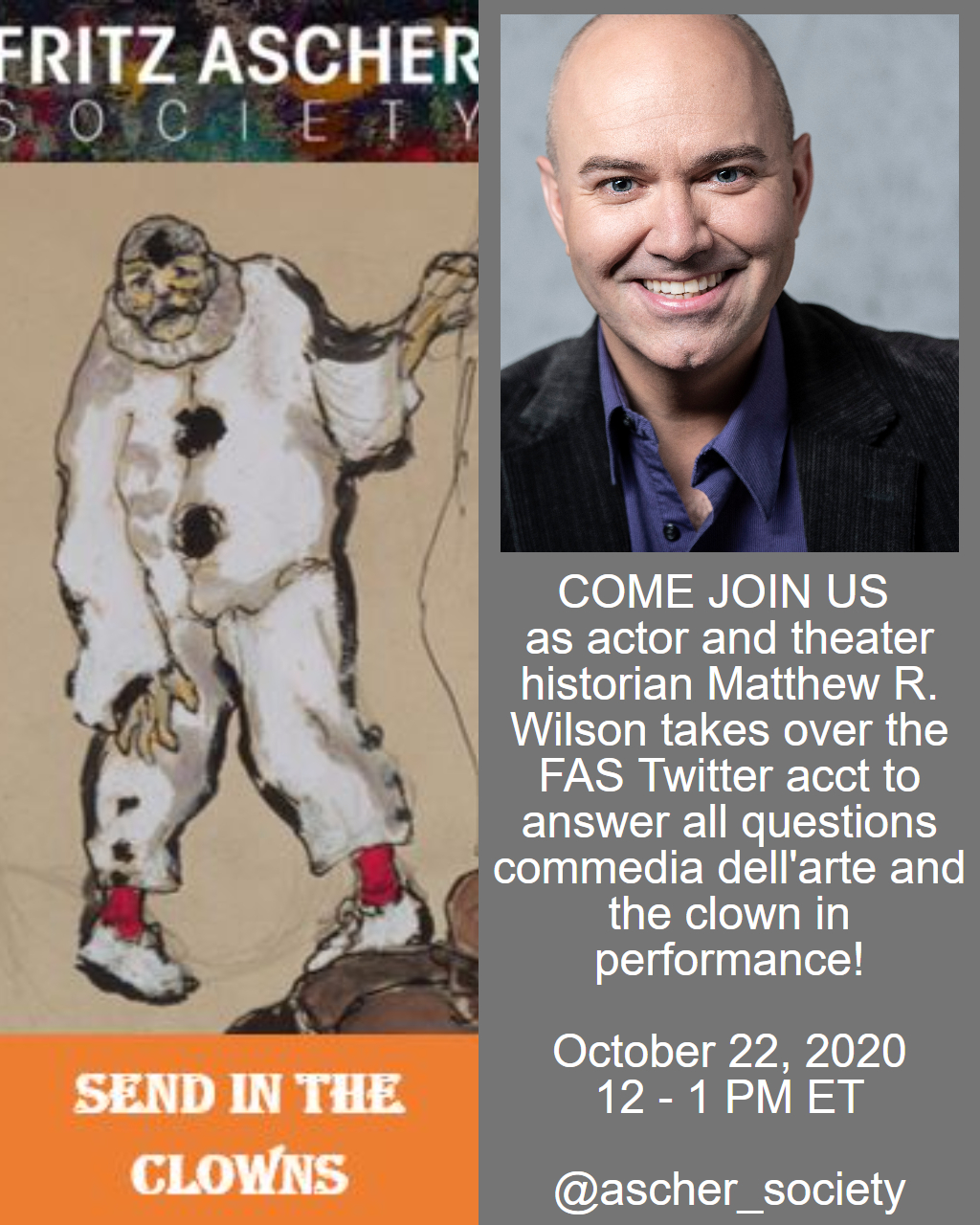
Twitter Takeover @Ascher_Society
Matthew R. Wilson, PhD
“Commedia dell’Arte and the Clown in Popular Culture”
1014 - space for ideas
1014 5th Avenue, New York, New York, NY, United States
Twitter @Ascher_Society Actor and theater historian Matthew R. Wilson takes over the FAS Twitter account to discuss the history of the Commedia dell’Arte, key themes in the genre, and how the Commedia dell’Arte has impacted popular culture. Submit your questions in advance by writing to info@fritzaschersociety.org Part of "Send in the Clowns," an interactive two-week digital initiative, which explores the clown as a figure between tragedy and comedy, between self- identification and stage--a character designed to (literally) mask the performer’s true feelings behind a facade of happiness. “Send in the Clowns” uses the prominence of the “clown” figure in Fritz Ascher’s work as a lens through which to explore the duality of the clown both historically and today. Generously sponsored [...]
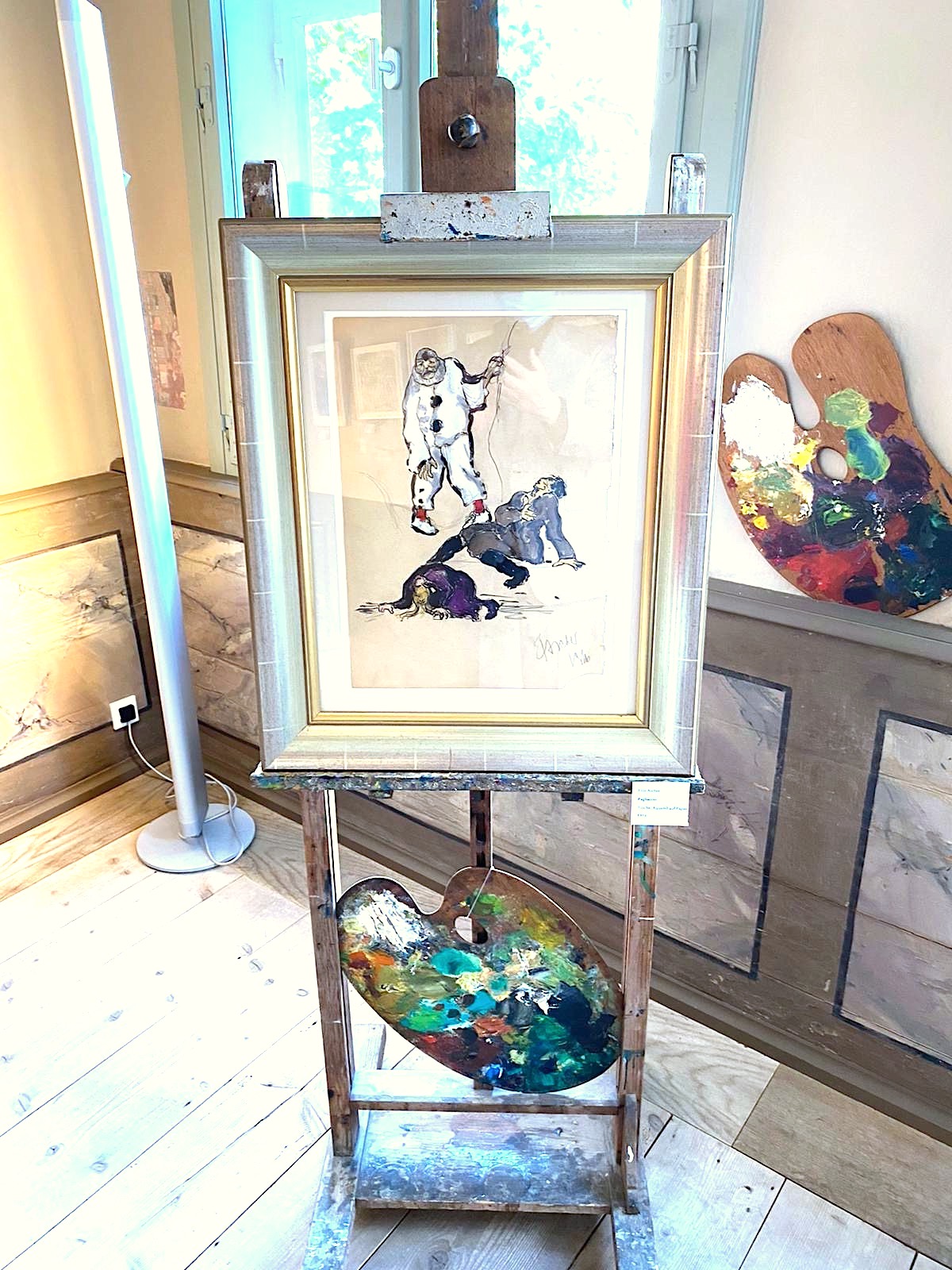
Bilder im Gespräch: Bajazzo
Guided Tour through the Exhibition
“The Loner. Clowns in the Art of Fritz Ascher”
by Curator Julia Diekmann, Höxter (Germany)
Forum Jacob Pins
Westerbachstr. 35-37, Höxter, NY, Germany
Exhibition curator Julia Diekmann guides through the exhibition. Whether in dramatic context or as individual figure, the clown always plays the role of the outsider, of the one opposite the many. He is laughed at and ridiculed, is the fool, despised, and humiliated, always operating from the margin. In Ascher’s work, the figure of the clown, the Bajazzo, appears first around 1916. It becomes a lifelong interest, expressed in paintings, drawings, lithographs and poems. Based on the opera I Pagliacci by Ruggero Leoncavallo (1857-1919), which was popular in the 1920s, Ascher creates both dramatic scenes of the tragic love burlesque and studies of the Bajazzo, the Pagliaccio or clown as a single figure. The intensity in the artistic expression of the figure, [...]
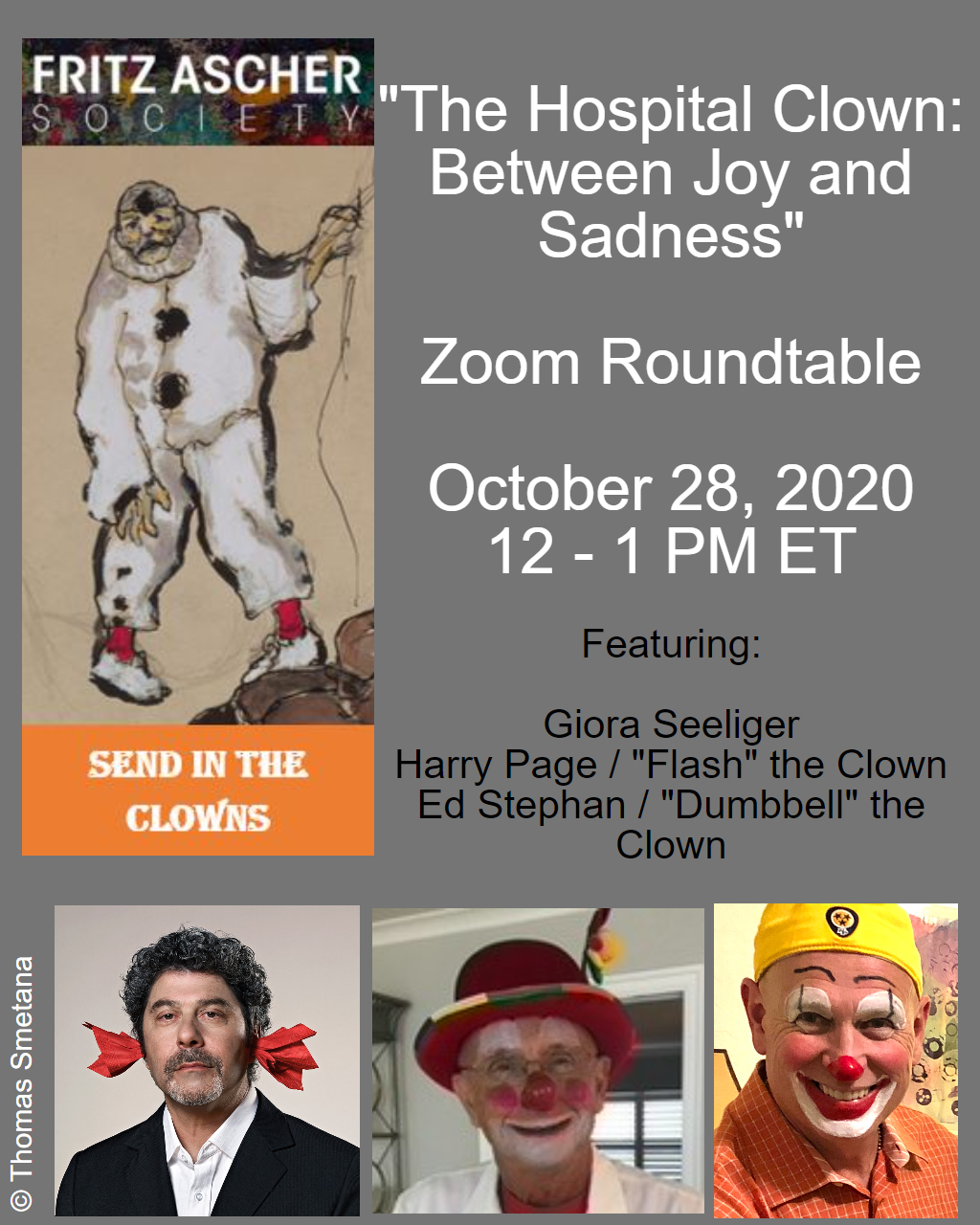
“The Hospital Clown: Between Joy and Sadness”
Roundtable featuring
Giora Seeliger, Harry Page, Ed Stephan
Moderated by Elizabeth Berkowitz
1014 - space for ideas
1014 5th Avenue, New York, New York, NY, United States
Watch the recording of this event HERE. Roundtable featuring Giora Seeliger Artistic Director and Founder of the Red Noses Clowndoctors International Harry Page “Flash” the Clown Ed Stephan “Dumbbell” the Clown Moderated by Elizabeth Berkowitz Art Historian and Digital Interpretation Manager, The Fritz Ascher Society in New York One of the more appealing aspects of the clown subject to artists like Fritz Ascher was the divide between a public persona committed to joy and happiness, and the pain or sadness that might lurk beneath the real, human surface. Hospital or healthcare clowns straddle this divide every day of their professional lives—working to bring happiness to child patients who are often in circumstances that might otherwise inspire grief or pain. This [...]
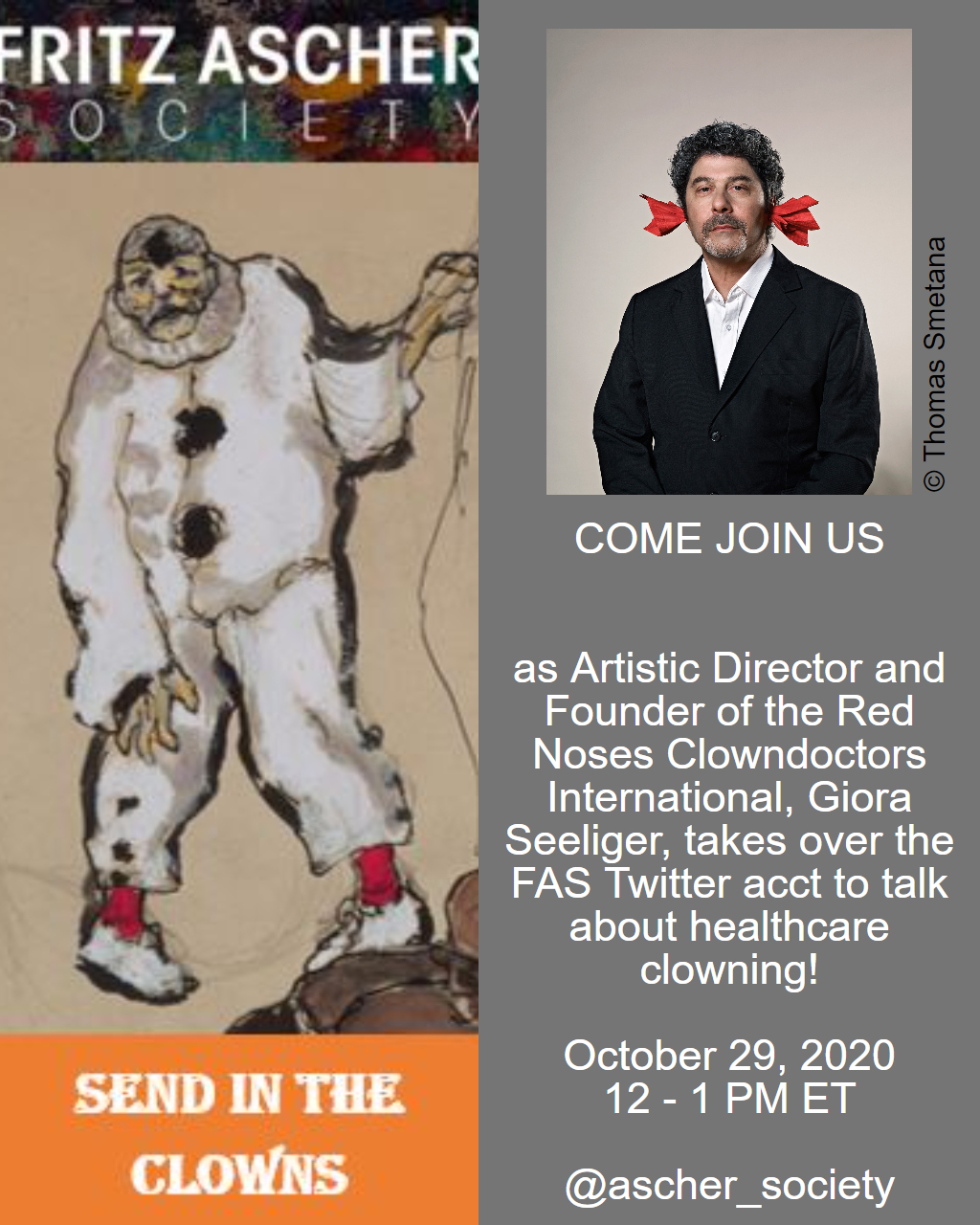
Twitterview @Ascher_Society
Giora Seeliger
“Ask A Healthcare Clown!”
1014 - space for ideas
1014 5th Avenue, New York, New York, NY, United States
Twitter @Ascher_Society Giora Seeliger, Artistic Director and Founder of Red Noses Clowndoctors International, takes over the FAS Twitter account to answer your burning questions about clowning, the role of a healthcare clown, and anything else that comes to mind! Submit your questions in advance by writing to info@fritzaschersociety.org Part of "Send in the Clowns," an interactive two-week digital initiative, which explores the clown as a figure between tragedy and comedy, between self- identification and stage--a character designed to (literally) mask the performer’s true feelings behind a facade of happiness. “Send in the Clowns” uses the prominence of the “clown” figure in Fritz Ascher’s work as a lens through which to explore the duality of the clown both historically and today. [...]
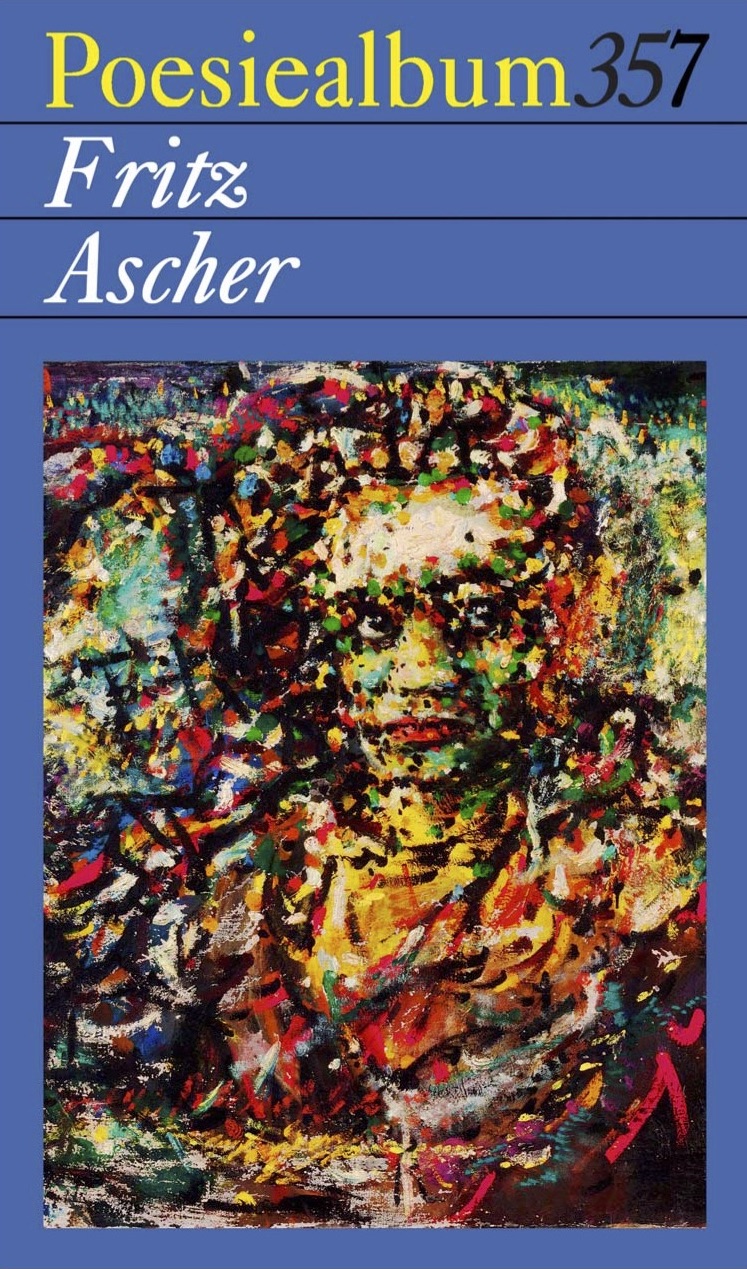
“Narr der ich bleib…”
Poems and Artwork by Fritz Ascher
Preview of “Poesiealbum” by Märkischer Verlag
Forum Jacob Pins
Westerbachstr. 35-37, Höxter, NY, Germany
Reading of Poems by Stephan Weigelin and Reflexion on Artwork by Julia Diekmann The event previews a "Poesiealbum" of Fritz Ascher’s poems, which will be published in December 2020 by Märkischer Verlag Wilhelmshorst, in the series “Ostracized Poets – Burned Books.” "Fritz Ascher's poetic voice rises at a time when his artistic voice is forced to fall silent. Fear of death, hunger and immobility, isolation and loneliness are his daily reality. In this situation he writes poems in which he shares his thoughts and innermost feelings and creates unpainted pictures. Ascher's poems are authentic, tender and powerful, and live from the expressive, creative use of language." Rachel Stern "... we can now safely include him in our canon of [...]
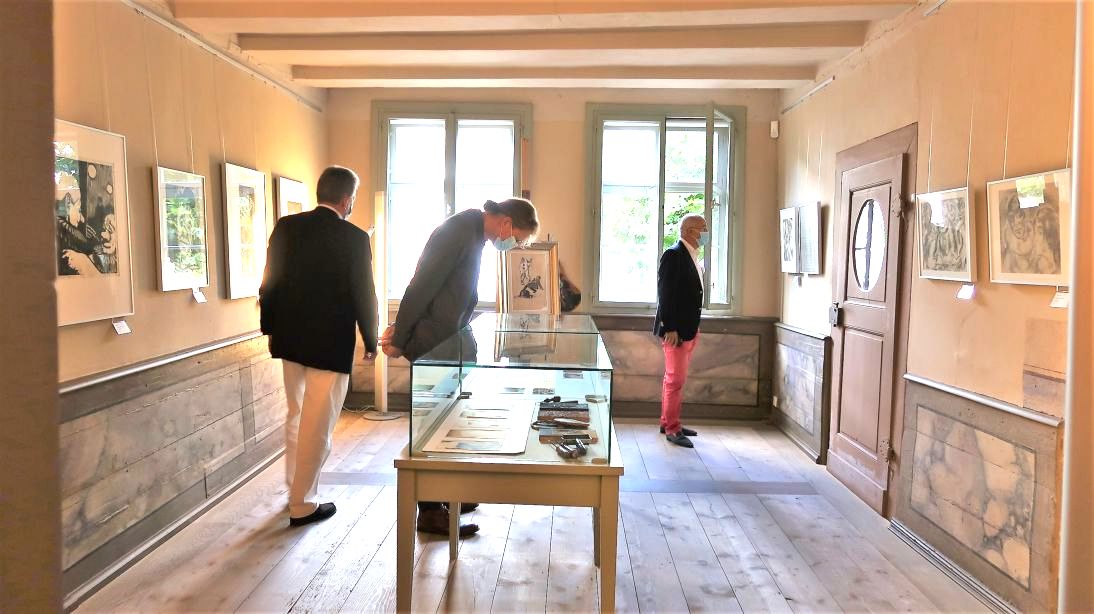
Kunstpause
Guided Tour through the Exhibition
“The Loner. Clowns in the Art of Fritz Ascher”
by Curator Julia Diekmann, Höxter (Germany)
Forum Jacob Pins
Westerbachstr. 35-37, Höxter, NY, Germany
Exhibition curator Julia Diekmann guides through the exhibition. Whether in dramatic context or as individual figure, the clown always plays the role of the outsider, of the one opposite the many. He is laughed at and ridiculed, is the fool, despised, and humiliated, always operating from the margin. In Ascher’s work, the figure of the clown, the Bajazzo, appears first around 1916. It becomes a lifelong interest, expressed in paintings, drawings, lithographs and poems. Based on the opera I Pagliacci by Ruggero Leoncavallo (1857-1919), which was popular in the 1920s, Ascher creates both dramatic scenes of the tragic love burlesque and studies of the Bajazzo, the Pagliaccio or clown as a single figure. The intensity in the artistic expression of the figure, [...]


